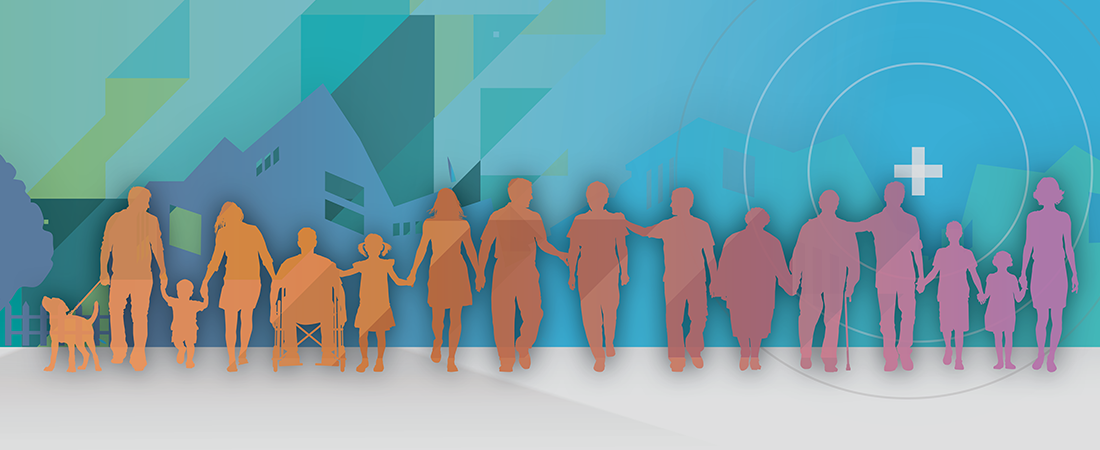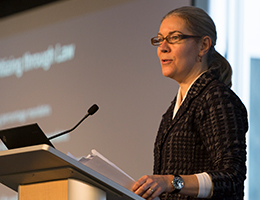Behavioral Health: 4 Ways to Build Programs That Work

It’s no secret that proactive health and wellness programs lay the foundation for healthier, stronger communities.
K.Dash_PromotePrevent.jpg

And yet, many communities take a largely reactive approach to significant public health challenges, such as prescription drug and alcohol misuse, mounting anxiety and stress among teenagers, and depression and suicide. This response has always troubled Kim Dash, a research scientist at EDC.
“Promoting healthy behaviors pays off in the long run,” she says. “We know what works. So why aren’t we doing it?”
Along with EDC colleagues Jim Vetter, Lauren Gilman, and Shari Kessel Schneider, Dash offers concrete ideas for improving behavioral health at the community level. These four EDC experts recently offered testimony before Massachusetts’s Special Legislative Commission on Behavioral Health Promotion and Upstream Prevention at a public hearing held at EDC in December 2017.
1. Focus on behavioral health promotion
While treatment and recovery services help people who are struggling with mental health and/or substance misuse issues, programs that promote behavioral health build resilience and healthy behaviors before problems occur, which may mitigate the need for treatment down the road.
Programs and practices in schools and communities that help young people learn to recognize and manage emotions, understand the perspectives of others, build healthy relationships, and solve problems responsibly are just some examples of behavioral health programs that work, says Vetter, who serves as the social and emotional learning expert on the Commission.
“A behavioral health promotion approach has been shown to reduce emotional distress, improve attitudes and behaviors, and even promote better academic performance,” he says. “It’s never too early to teach children and families these skills.”
2. Prioritize community-level data
When communities are making decisions about behavioral health programming, gathering local data is essential, says Schneider.
“Local data stimulates change in a way that state and national health data simply can’t,” she says. “It has more value and relevance to community stakeholders and can prompt communities to make real changes.”
Gathering and examining local data can lead to the use of programs and services that promote behavioral health. As director of the MetroWest Adolescent Health Survey, a biennial survey of middle and high school students in 25 Massachusetts communities that began in 2006, Schneider has seen this firsthand.
“One community knew that some students were struggling with anxiety and stress, but they had no idea of the scope of the issue until they looked at the survey data,” she says. “It inspired them to implement schoolwide interventions designed to improve student mental health and wellness. This is the power of local data—it raises community awareness and prompts action.”
3. Collaborate with local partners
Promoting behavioral health needs to be a community-wide effort that includes collaboration among educators, law enforcement, public health officials, and policymakers, says Gilman. Research has also shown that programs are more likely to be effective when they are developed or selected in collaboration with the populations most affected by the behavior that the program is trying to prevent.
“We can’t expect to reach any group of individuals without including them in the conversation,” she says. “The adage ‘nothing about us without us’ resonates loud and clear.”
Gilman, who directs EDC’s Massachusetts Technical Assistance Partnership for Prevention (MassTAPP), advises communities to identify local sources of strength—such as supportive business owners, educated parents, or a strong faith community—and involve them in promoting positive messages and behaviors.
“If your community is trying to reduce underage drinking, are liquor store owners being treated as the enemy, or are they being brought into the conversation as partners?” she asks. “Good collaboration is primary prevention.”
4. Use science
It’s a lot of work for communities to build up their public health initiatives, but the health and economic benefits of implementing programs can be significant.
“We know that implementing certain behavioral health promotion programs is cost effective,” says Dash. “These cost savings are usually measured in years of a productive life saved and less involvement in criminal activity and the criminal justice system.”
She encourages communities to use programs with strong evidence of effectiveness when they are trying to promote behavioral health, as well as to address risk factors associated with mental illness and substance misuse. She recommends a number of resources for finding such programs:
- SAMHSA’s National Registry of Evidence-based Programs and Practices
- CDC’s Community Guide
- Child Trends’ What Works Database
- CASEL’s Guide to Effective Social and Emotional Learning Programs
“The truth is that behavioral change can be hard to bring about,” says Dash. “But there are many programs that have produced positive outcomes and have the research to prove it.”